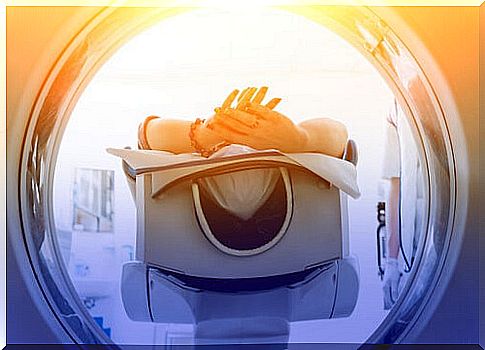Differences Between CT And MRI
The differences between TAC and resonance are basically technical. They use different methods to capture the images and also offer different results according to what you want to observe. Likewise, the way the procedure is carried out in each test is different.
Although there are differences between CT and MRI, both also have many similarities. Both are diagnostic tests that use the image. Similarly, both are non-invasive tests that seek to explore, detect, or rule out diseases.
The doctor orders one or another test according to the condition of each patient. The two tests have limits or contraindications that must be taken into account. Either way, although there are differences between CT and MRI, both tests are safe and almost always very effective.
CT or computerized axial tomography
One of the first noticeable differences between CT and MRI is the equipment used to perform each test. The CT scan is done with a machine called a scanner that uses X-rays, like traditional X-rays. What happens, basically, is a multiple taking of pictures of the inside of the body.
These kinds of photographs are taken from different angles, and then a computer assembles the images so that a certain area of the body can be appreciated in a three-dimensional simulation. Although it uses a principle similar to that of radiography, CT is much more detailed.
The radiation generated by the scanner makes soft tissues more visible than solid tissues. Soft tissues are all those that are not composed of bones, such as organs, muscles, ligaments and vessels, among others.
Thus, less dense areas -such as soft tissues- appear lighter in color, while denser areas -such as bones) appear dark in color. The ionizing radiation produced by a CT scan is minimal, and therefore does not generate health effects. However, this method should not be abused.

Nuclear Magnetic Resonance or MRI
In an MRI, the images are obtained in a different way than CT. In this case , use is made of magnetic fields , magnets and radio waves. By means of a complex operating system, it allows obtaining more contrasting images, that is, more detailed images of soft tissues.
By means of magnetic resonance , images can be taken from any point of view and in two or three dimensions. Soft tissue images appear very sharp, so that minute details can be obtained that other tests cannot.
Many problems in the body cannot be detected with the naked eye and only become visible when images are obtained in all three planes of space – horizontal, coronal and sagittal. Likewise, magnetic resonance imaging is very sensitive to the movement of liquids and this allows some tests to be carried out without using any contrast substance.

Differences between CT and MRI
As can be seen from what we have been commenting on, there are several differences between CT and resonance. The first of these is the equipment that is used in both. In the CT there is a ring and the table passes from one side of it to the other during the study. In the MRI, the table is completely inserted into a tube during the entire examination.
Other differences between CT and MRI are as follows:
- CT is based on the use of X-rays, that is, it uses radiation. In NMR, on the other hand, a magnet and receiver antennas are used for the signals that the body emits.
- MRI generates much sharper and more detailed images, thanks to the high resolution of the equipment.
- CT is indicated for cases of bone lesions, lung and chest studies, oncology and emergencies. MRI is generally recommended for the study of ligaments and tendons, brain pathologies, spinal cord and spinal cord injuries.
- The CT machine is quiet, while the MRI machine makes a loud noise.
- CT is done faster than MRI. While the first lasts about half an hour, the second usually takes more than an hour.
- Getting a CT scan is cheaper than an MRI.
Contraindications
Regarding contraindications, it should be noted that CT is not suitable for pregnant women, patients with kidney failure and those with allergies to the contrast material used. For its part, MRI is not performed in patients with metallic implants, prostheses made of this material or some types of pacemakers.









